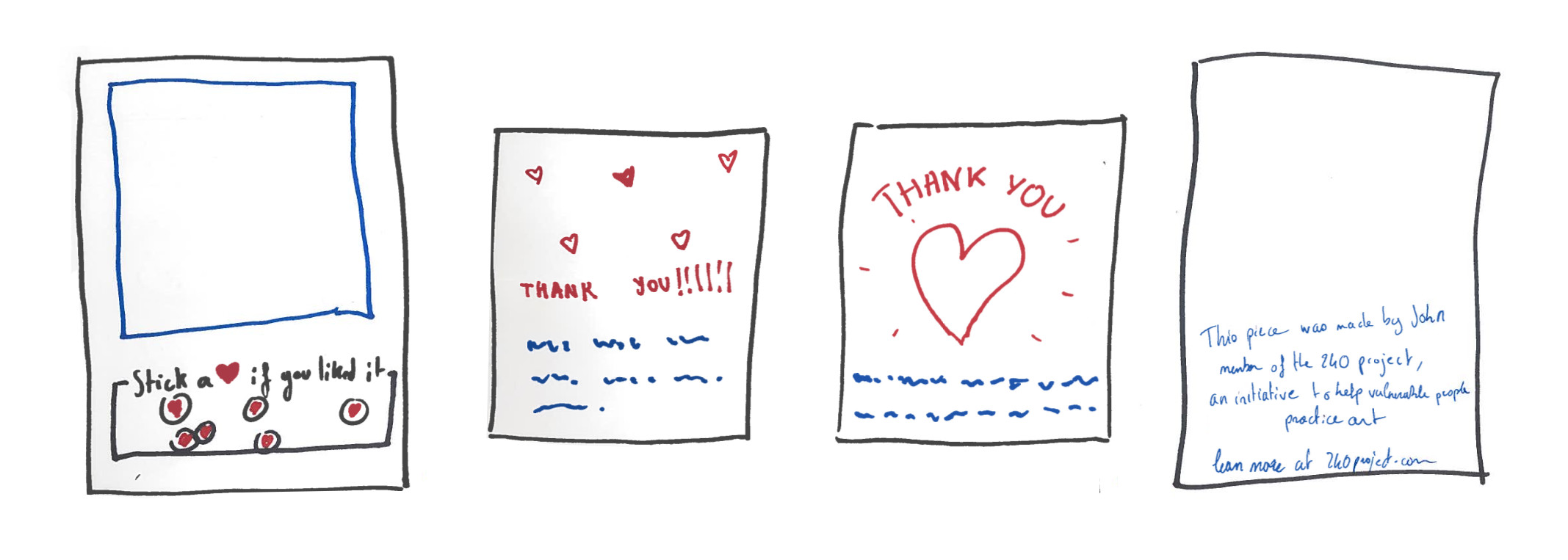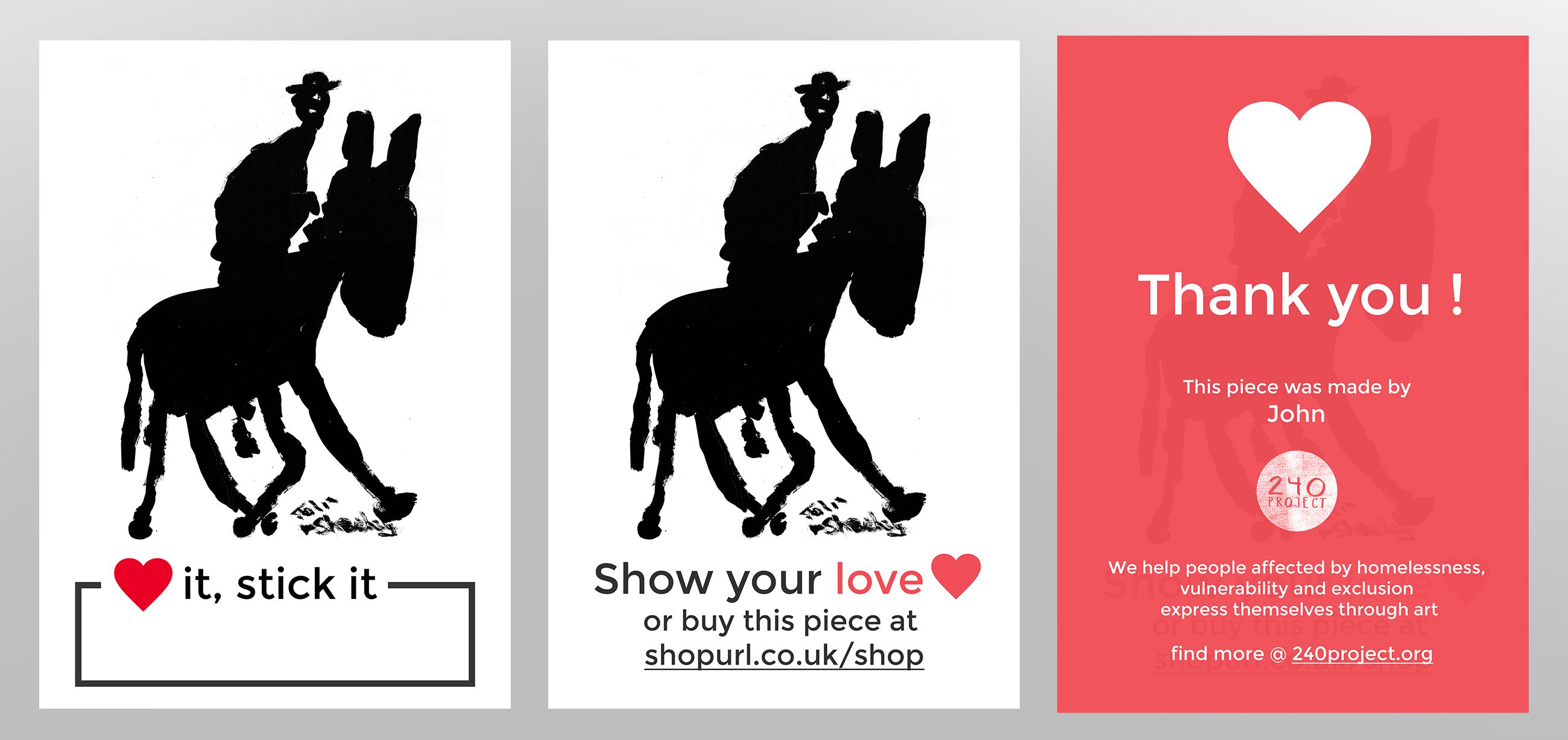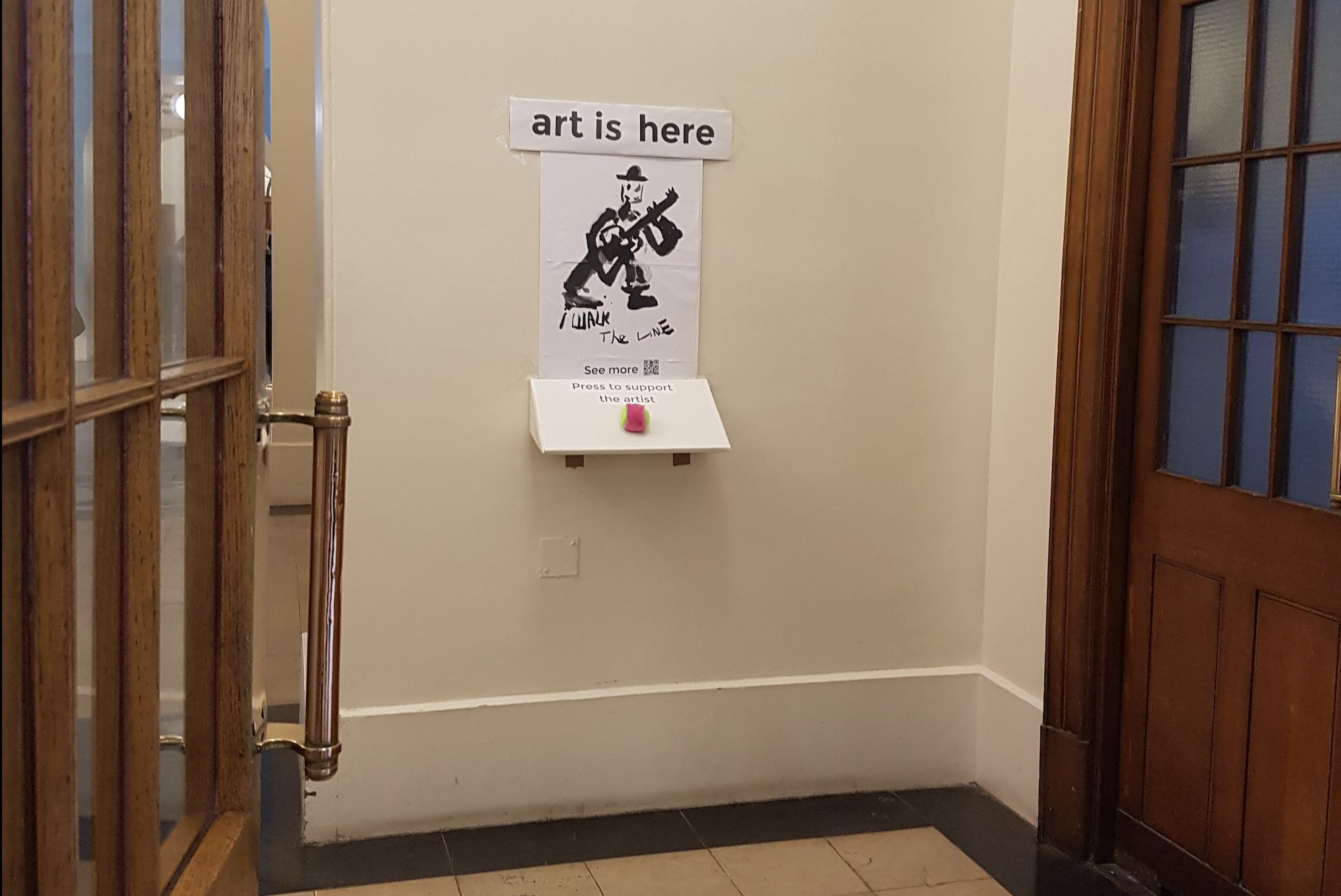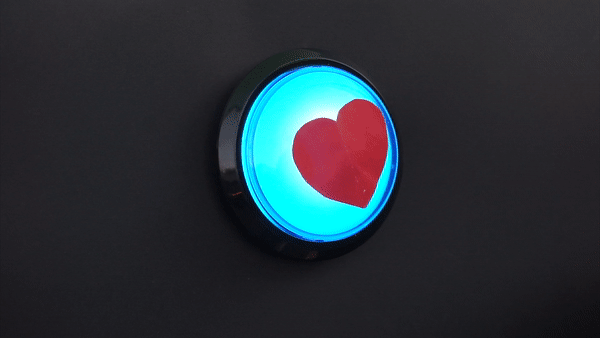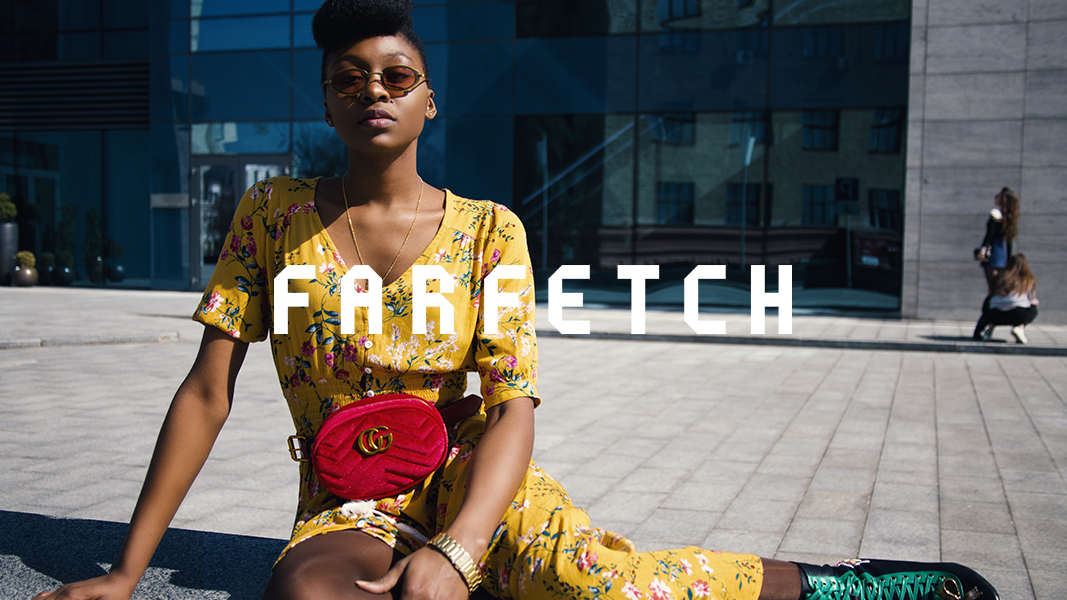Hope it can still be useful!
streetheart
empowering homeless artists through art and technology
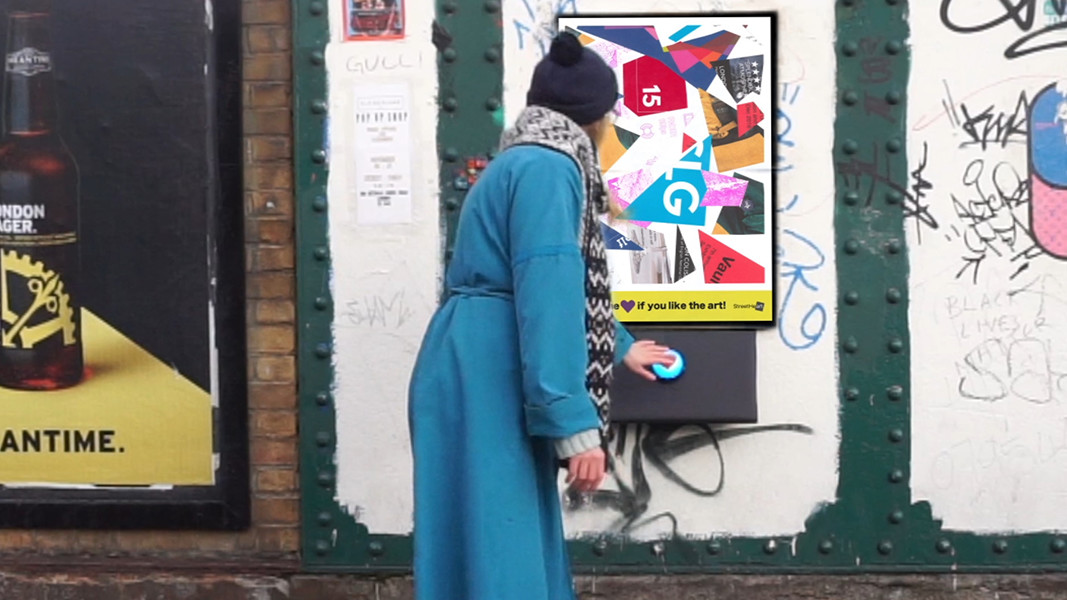
Context
Streetheart is a multi-platform service, designed to bring exposure and revenues to homeless artists.
It allows them to document their artwork in activity centres, have social workers to review it, and then makes it available on public displays and an online store.
This project was our answer to the CHI Student Design Competition 2017. The subject of “levelling the playfield” had to be addressed by using Interaction Design Method.It was selected to be presented at the CHI 2017 Conference in Denver and made it to the final round of the Student Design Competition there.
Team: Giovanna Vilaza, Johanna Mähönen, Oleksandra Danilina & Clément Hamon
Problem
After familiarizing ourselves with the pitch, we decided to focus our research towards helping people who struggle with homelessness. We agreed that this group was appropriate for the subject “leveling the playfield” and hypothesized that we could get access to users through charities.
We started by conducting desk research to gain a better understanding of the diverse struggles that came along homelessness. Our next step was to reach out to some charities to meet people dealing with those issues as well as the social workers helping them.
We came into contact with the 240 Project, a charity based in West London providing support and art activities for people affected by homelessness, vulnerability and exclusion.
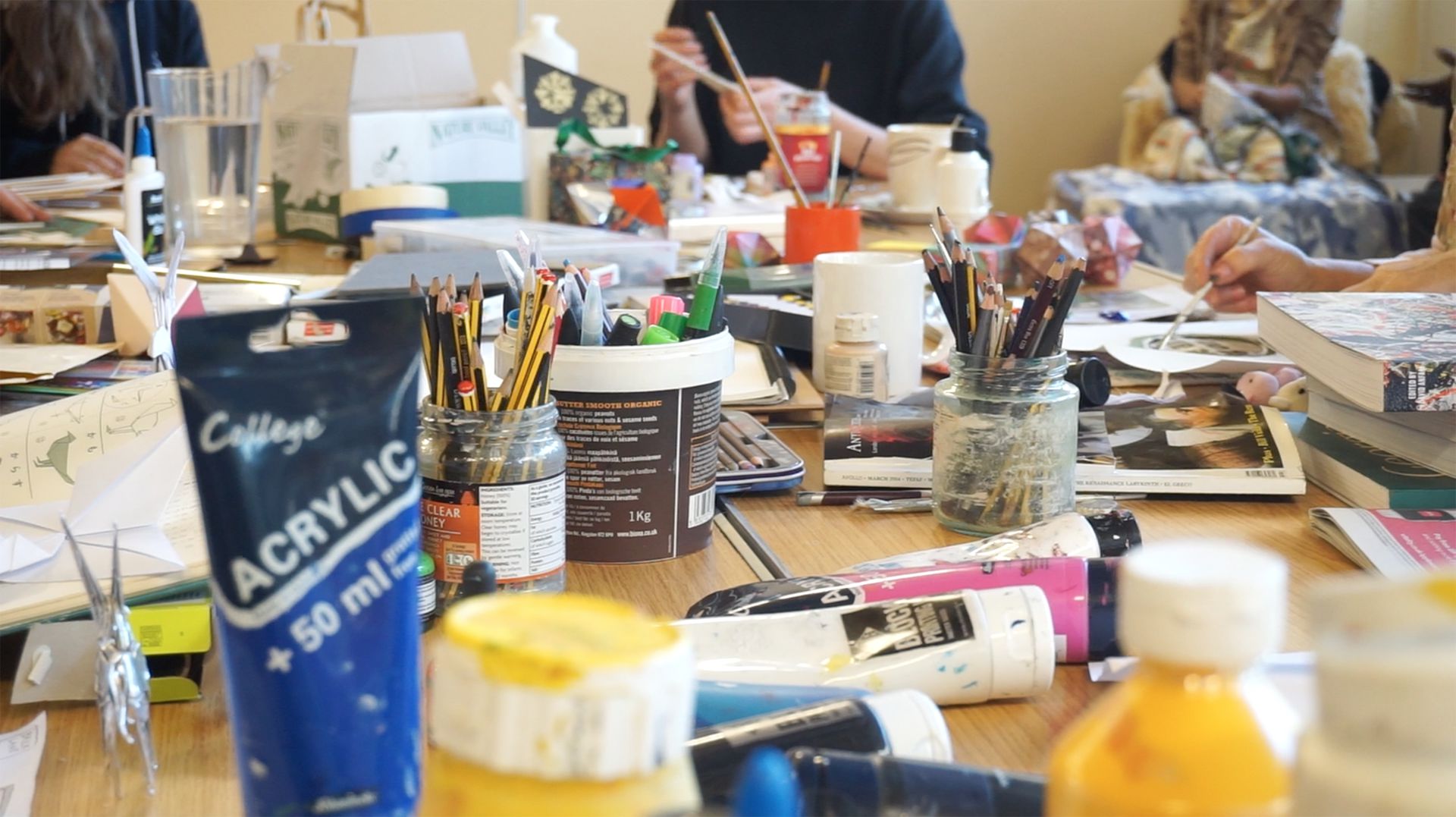
Art table at the 240 project
During our first visit, we conducted 8 contextual interviews, 6 members and 2 social workers. We focused on the factors of exclusion but kept a broad perspective to not miss issues. From those interviews, we created an affinity diagram to organize our findings. From there we chose to focus our scope on the problems related to the creative activities in the centre.
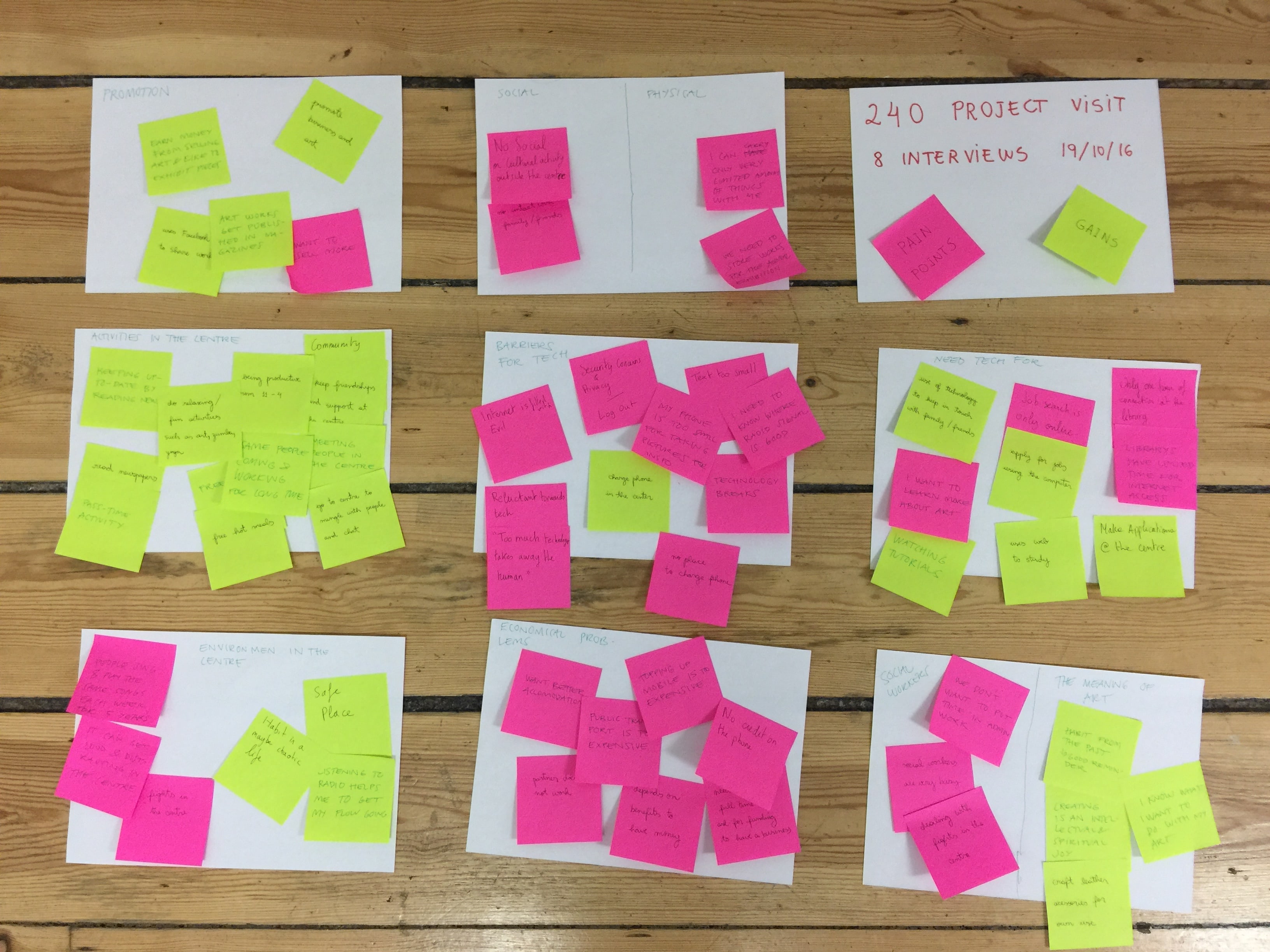
Affinity diagram
Pink: pain points
Yellow: positive points
Those insights served to fuel a first brainstorming session. A total of 62 ideas were generated, this number was then narrowed down to the 4 more promising based on voting. For each of those, high-level scenarios were drawn to start a conversation with the social workers and members during our second visit to the centre.
In addition to scenarios, we prepared a deck of card to engage in a sorting exercise with the centre’s members.
Two sets were created: a first one about the art practices that they preferred and a second one about the motivations and enjoyments behind the creation of art.
Those sets were used in a card sorting exercise with some centre members. This method allowed us to highlight the main interest points of the members regarding their art practice, and start a conversation around it.

Card sorting with a 240 project member
What came out of those research was how eager the members were to get their work seen and appreciated. However, the centre as limited resources and reach and although a yearly exhibition is organised, it is a lot of work for the social workers on top of day-to-day activities. There is great art being produced, but most of it remains stuck in cupboards in the centre.
Design
Using the findings from our user research and the feedback we got on first ideas, by both members and social workers, we discussed and brainstormed around a user journey. At the stage the objective was to address the opportunities we highlighted with a Blue sky approach.
The approach we came up with revolves around three stages and three actors: the centre members, the social worker and the general public.
Using a tablet provided in the centre, members can take pictures of their work, write up a description and upload it to an online platform.
A social workers form the centre then approves or edit the submission in a moderation interface.
Once a work has been approved it is available in two places: displayed in screens placed around the city and available for purchased on an online store.
For the following prototypes, the UX was made in common, UI by Johanna and interactive prototyping by me. They served as merely a higher fidelity prototype to further test the concept rather than implementable Wireframe
